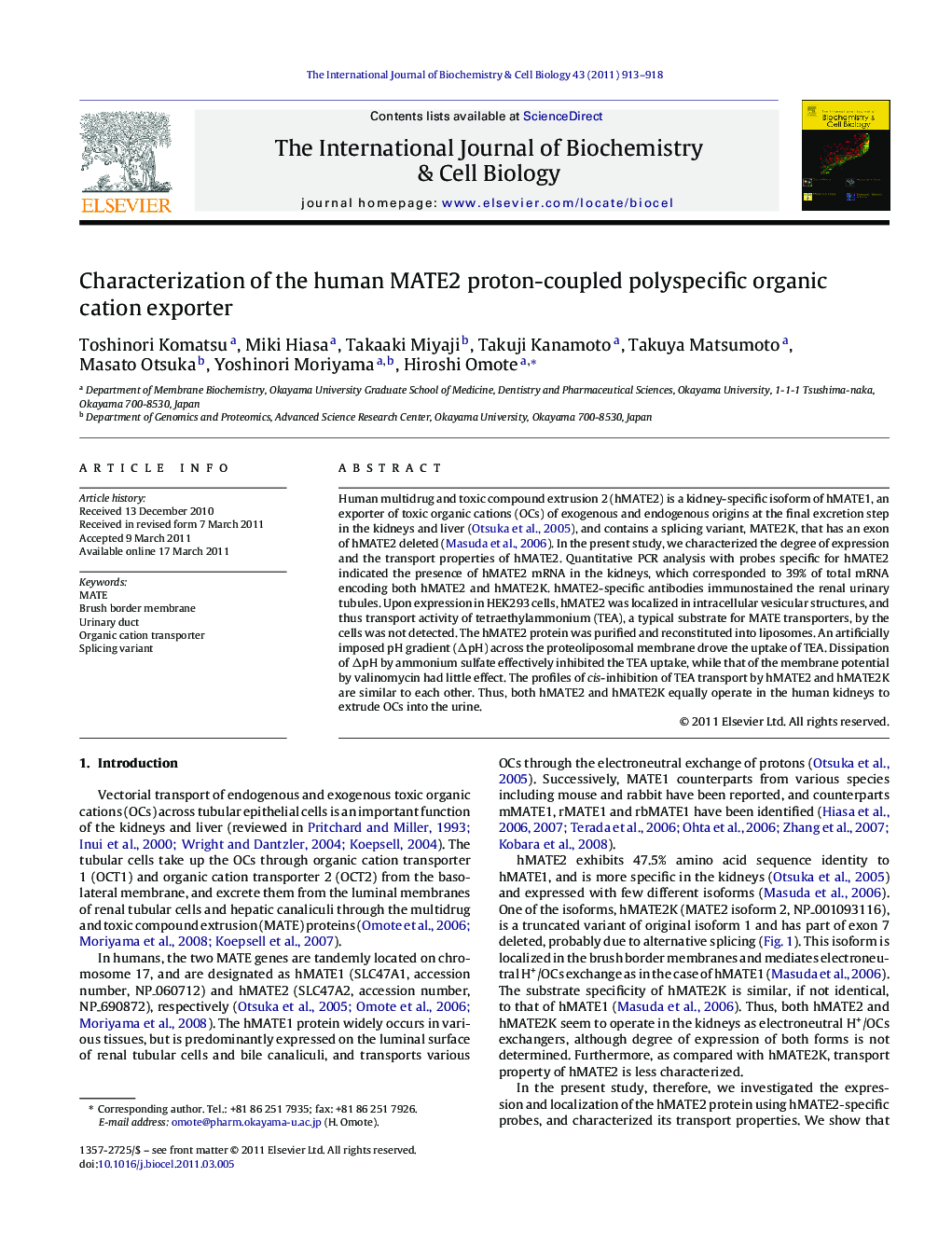| Article ID | Journal | Published Year | Pages | File Type |
|---|---|---|---|---|
| 8324991 | The International Journal of Biochemistry & Cell Biology | 2011 | 6 Pages |
Abstract
Human multidrug and toxic compound extrusion 2 (hMATE2) is a kidney-specific isoform of hMATE1, an exporter of toxic organic cations (OCs) of exogenous and endogenous origins at the final excretion step in the kidneys and liver (Otsuka et al., 2005), and contains a splicing variant, MATE2K, that has an exon of hMATE2 deleted (Masuda et al., 2006). In the present study, we characterized the degree of expression and the transport properties of hMATE2. Quantitative PCR analysis with probes specific for hMATE2 indicated the presence of hMATE2 mRNA in the kidneys, which corresponded to 39% of total mRNA encoding both hMATE2 and hMATE2K. hMATE2-specific antibodies immunostained the renal urinary tubules. Upon expression in HEK293 cells, hMATE2 was localized in intracellular vesicular structures, and thus transport activity of tetraethylammonium (TEA), a typical substrate for MATE transporters, by the cells was not detected. The hMATE2 protein was purified and reconstituted into liposomes. An artificially imposed pH gradient (ÎpH) across the proteoliposomal membrane drove the uptake of TEA. Dissipation of ÎpH by ammonium sulfate effectively inhibited the TEA uptake, while that of the membrane potential by valinomycin had little effect. The profiles of cis-inhibition of TEA transport by hMATE2 and hMATE2K are similar to each other. Thus, both hMATE2 and hMATE2K equally operate in the human kidneys to extrude OCs into the urine.
Related Topics
Life Sciences
Biochemistry, Genetics and Molecular Biology
Biochemistry
Authors
Toshinori Komatsu, Miki Hiasa, Takaaki Miyaji, Takuji Kanamoto, Takuya Matsumoto, Masato Otsuka, Yoshinori Moriyama, Hiroshi Omote,
